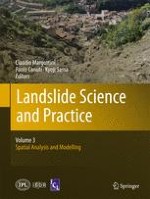2013 | OriginalPaper | Chapter
Lahar, Floods and Debris Flows Resulting from the 2010 Eruption of Eyjafjallajökull: Observations, Mapping, and Modelling
Authors : Esther H. Jensen, Jon Kr. Helgason, Sigurjón Einarsson, Gudrun Sverrisdottir, Armann Höskuldsson, Björn Oddsson
Published in: Landslide Science and Practice
Publisher: Springer Berlin Heidelberg
Activate our intelligent search to find suitable subject content or patents.
Select sections of text to find matching patents with Artificial Intelligence. powered by
Select sections of text to find additional relevant content using AI-assisted search. powered by
